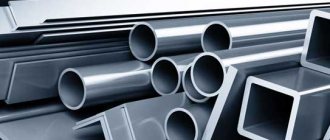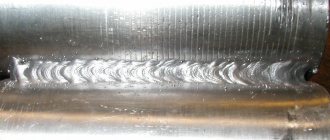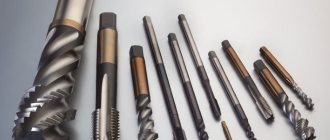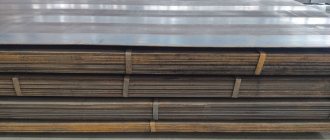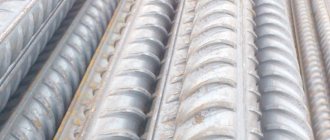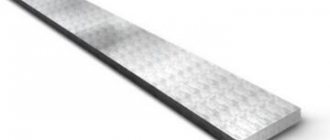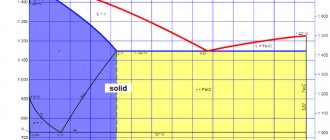There are hundreds of steel grades in the world. Only one domestic stamp book describes more than 700 grades of this alloy. But, we can say that out of this entire quantity, only a few are in deserved demand among manufacturers of various types of metal structures. The characteristics of 09G2S steel make it possible to attribute it specifically to this minority. Why does this happen and where is it used?
09G2S - chemical composition
The steel is classified as silicon-manganese. In accordance with the requirements of GOST 27772-88, it fully complies with C345 steel. The latter is used for the manufacture of building structures.
In accordance with the labeling system adopted in our country, composition 09G2S is deciphered as follows:
- carbon (C) - 0.09%;
- manganese (Mn) - 2%;
- silicon (Si) - no more than 1%.
The amount of alloying components in the steel is not so high, which is why 09G2S steel is classified as low-alloy. This alloy forms the basis of a whole family of steels. For example, - 09g2, 09g2dt, 09g2t, 10g2s and many others. The characteristics of alloys of this family are approximately similar.
Purpose
Structural low-alloy silicon-manganese steel 09G2S is used for the manufacture of elements and parts of welded structures operating under pressure in the temperature range -70 +4250C.
Almost the entire line of metal products is made from steel 09G2S, namely steel I-beam, hot-rolled steel sheet, used and unused pipes, strip, circle. St 09G2S has received such widespread use due to its mechanical, chemical and physical properties. Such as good weldability, exposure to external environments, high strength under load.
09G2S - properties
The composition of the alloy provides this material with the following basic properties:
- density 7.85 g/cu. cm.;
- the yield strength, when heated to different temperatures, lies in the range from 255 to 155 MPa.
Parts made of 09G2S alloy can be welded together by any known type of welding used in industry. In this case, there is no need to carry out any additional preparatory operations, for example, preheating the welding site.
This type of steel has found its application in the creation of welded structures. The good weldability of this material is ensured by the low content of carbon atoms.
Many years of experience show that a higher amount of carbon leads to the formation of various defects, for example, porosity, lack of penetration. Moreover, when carbon burns out, hardened micro-sections are formed in the structure of the weld and this leads to a decrease in the quality of the weld.
Among the many advantages of this steel is the fact that it does not acquire additional brittleness after tempering. In addition, its structure makes it possible to ensure resistance to excessive heating and, as a consequence, the appearance of cracks in the weld area.
Several methods are used to produce this grade of steel:
- open hearth;
- electrothermal;
- converter
Cast iron is used as the main raw material. In accordance with GOST requirements, the melt is optimized, that is:
- raise the amount of carbon;
- alloying components are introduced.
Thanks to these measures, the finished product receives the required properties.
Assessment of weldability of steels. Carbon equivalent formulas
Assessment of the weldability of steels includes such indicators as:
1. The tendency of steel to form cold and hot cracks when welding in the weld metal or heat-affected zone.
2. Tendency to form hardening structures and change the structure of the metal in the heat-affected zone. In this area, there is a strong enlargement of grains, and, as a result, a decrease in strength.
3. Physical and mechanical characteristics of the welded joint
4. Compliance of special parameters of the welded joint (such as heat resistance, wear resistance, etc.) with the specified requirements.
Range of products made from steel 09G2S
The metallurgical enterprises of our country produce the following rolled products:
- 19281-73 Long and shaped rolled products;
- 19282-73 Sheets and strips.
That is, on the metallurgical products market, consumers can purchase a channel, angle, sheet, etc. We can safely say that such a wide range of products is ensured precisely by the properties and, of course, the price of this material.
For comparison, we can say that on average the price of a hot-rolled sheet of 09G2S steel is 43,000 rubles per ton, while a sheet of ordinary steel costs approximately 41,000 - 43,000. But the properties of the material described cover all the costs associated with its acquisition and processing.
Strength class is. What is Strength Class?
Strength class – arm. the standardized value of the yield strength established by the standard, N/mm2.
The strength class of reinforcing steel is the standardized value of the physical or conditional yield strength of steel established by the standard.
Category: Types of reinforcement
Encyclopedia headings: Abrasive equipment, Abrasives, Highways, Automotive equipment, Motor transport, Acoustic materials, Acoustic properties, Arches, Reinforcement, Reinforcement equipment, Architecture, Asbestos, Aspiration, Asphalt, Beams, Uncategorized, Concrete, Concrete and reinforced concrete, Blocks, Window blocks and doors, Logs, Beams, Cables, Ventilation, Weighing equipment, Vibration protection, Vibration technology, Types of reinforcement, Types of concrete, Types of vibration, Types of fumes, Types of tests, Types of stones, Types of bricks, Types of masonry, Types of control, Types of corrosion, Types of loads on materials, Types of floors, Types of glass, Types of cement, Water-pressure equipment, Water supply, water, Binders, Sealants, Waterproofing equipment, Waterproofing materials, Gypsum, Mining equipment, Rocks, Combustibility of materials, Gravel, Lifting mechanisms, Primers, fiberboard, Woodworking equipment, Woodworking, DEFECTS, Ceramics defects, Paint defects, Glass defects, Concrete structure defects, Defects, woodworking, Material deformations, Additives, Concrete additives, Cement additives, Dispensers, Wood, chipboard, Railway transport, Factories, Factories, production, workshops, Putties, Concrete fillers, Concrete protection, Wood protection, Corrosion protection, Sound-absorbing material, Ash, Lime, Wooden products, Glass products, Tools, Geodesy tools, Concrete testing, Testing equipment, Cement quality, Quality, control, Ceramics, Ceramics and refractories, Adhesives, Clinker, Wells, Columns, Compressor equipment, Conveyors, Precast concrete structures, Metal structures, Other structures, Corrosion of materials, Crane equipment, Paints, Varnishes, Lightweight concrete, Lightweight concrete fillers, Stairs, Trays, Mastics, Mills, Minerals, Installation equipment, Bridges, Spraying, Firing equipment, Wallpaper, Equipment, Equipment for the production of concrete, Equipment for the production of binders, Equipment for the production of ceramics, Equipment for the production of glass, Equipment for the production of cement, General, General terms, General terms, concrete, General terms, woodworking, General terms, equipment, General, factories, General, aggregates, General, quality, General, corrosion, General, paints, General, glass, Fire protection of materials, Refractories, Formwork, Lighting, Finishing materials, Test deviations, Waste, Production waste, Panels, Parquet, Lintels, Sand, Pigments, Lumber, Feeders, Plasticizers for concrete, Plasticizing additives, Plates, Coatings, Polymer equipment, Polymers, Flooring, Floors, Pressing equipment, Devices, Devices, Purlins, Design, Production, Anti-frost additives, Fire-fighting equipment, Others, Others, concrete, Others, putties, Others, paints, Others, equipment, Types of wood, Destruction of materials, Mortar, Crossbars, Piles, Piling equipment, Welding , Welding equipment, Properties, Properties of concrete, Properties of binders, Properties of rock, Properties of stones, Properties of materials, Properties of cement, Seismic, Warehouses, Hardware, Dry mixtures, Resins, Glass, Construction chemicals, Building materials, Superplasticizers, Drying equipment , Drying, Drying, woodworking, Raw materials, Theory and calculation of structures, Thermal equipment, Thermal properties of materials, Thermal insulation materials, Thermal insulation properties of materials, Thermal and damp treatment of concrete, Safety precautions, Technologies, Concreting technologies, Ceramic technologies, Pipes, Plywood, Trusses, Fiber , Foundations, Fittings, Cement, Workshops, Slags, Grinding equipment, Putties, Veneer, Plastering equipment, Noise, Crushed stone, Economy, Enamels, Emulsions, Power equipment
09G2S - scope
Products made from steel 09G2S are used for the production of structures for various purposes. This is facilitated by high strength, which allows the use of thinner structural components. That is, where the thickness of the material from ordinary steel is 5 mm, then from low-alloy steel it will be 1.5 - 2 times less, and we must remember that the cost of these different steels is approximately the same.
The characteristics inherent in the 09G2S alloy make it possible to use it in the manufacture of parts and assemblies that will operate in the temperature range from -70 to +450 degrees Celsius. Weldability, which is significantly higher in comparison with other steels, makes it possible to create complex engineering structures used in shipbuilding, mechanical engineering, and railway transport. After certain types of heat treatment, this steel is used for the production of pipeline fittings. By the way, the ability of this steel to operate at temperatures of -70 degrees made it possible to use pipes made from this material for transporting hydrocarbons in the north of our country.
This steel, with its high weldability and excellent mechanical parameters, is ideal for the production of shaped products, such as beams or channels. In addition, this steel is used to produce components for the machine tool industry, transport, construction and chemical industries.
In construction, a square pipe made of 09G2S steel is widely used. Various fences are made from it, including decorative ones, advertising structures and small architectural forms are erected. This material also plays an important role in the production of boiler equipment, most of which is made from it.
It should be noted that the use of structures made of 09G2S steel allows the functioning of municipal facilities, transport systems, and industrial complexes located in regions with a harsh northern climate. For example, products such as flanges are in wide demand. Experience shows that 09G2S steel is the optimal material for their production. The fact is that they can be used both indoors and when working at various temperatures, including low ones.
The wide applicability of 09G2S steel and its analogues is explained not only by its exceptional technological properties, but, from the point of view of cost reduction, for the production of specific products. In fact, structures welded from this material are easier to process, have less weight and have good strength and wear resistance parameters.
Comparison with another steel grade
For example, for 09g2s and st3 the difference is determined primarily by the carbon content. For St3sp it is 10-20 times higher than what is found in the low-alloy alloy.
St3sp – refers to carbon alloys. This grade of steel is characterized by high brittleness and rapid destruction at low temperatures. If the brand being described has a lower limit of -70 degrees, then the object of comparison is only -20.
The quality of St3sp is ordinary, which indicates a likely high presence of sulfur and phosphorus. Then, like 09g2s is high quality. All other advantages are already in the previous description. It only remains to note that the cost of this brand is significantly higher than the price of St3sp.
Video about low alloy steels:
Which is better: galvanized or stainless steel?
In order to successfully solve various technological problems and not get confused: buy a galvanized sheet instead of a stainless steel one, contact a trusted, reputable supplier. Although both metals are corrosion-resistant, and when constructing structures with a service life of no more than 10 years, it is quite possible to get by with cheaper galvanized steel, for critical objects it is still not worth skimping on quality.
A guarantee that you are purchasing a certified product will be choosing as a partner a reliable supplier with attractive market offers. Today we are the best and are ready to supply any volumes of highest quality metal products in the shortest possible time.
Welding steel
As noted above, welding 09G2S steel does not require preliminary preparation, but there are methods that use additional heating up to 120 C. Welding parts can be performed using any electrodes, for example, E42A or E50A. The technology and welding techniques are no different from those used when working with other grades of steel. But there are also small exceptions, for example, GOST requires cutting edges with a steel sheet thickness of 5 mm or more. Good weldability of 09G2S allows you to work without cutting edges up to a thickness of 40 mm.
When semi-automatic welding of sheets, the typical mode is the following:
- welding current strength - from 200 to 230 A;
- shielding gas pressure - from 2 to 2.2 atm.
Structures made of this steel do not require special conditions for cooling after welding. Cooling down in the open air, it gains the necessary seam quality parameters.
Formulas for carbon equivalent of steels and other parametric expressions for assessing weldability
To assess the weldability of steels, a value such as the carbon equivalent of steels (Ceq) is used. When determining the carbon equivalent, the chemical composition of steels is taken into account, because The influence of alloying elements on the weldability of steel is very large. Carbon (C) has a particularly strong effect on weldability. To determine the tendency of a metal to form cold cracks during welding, the following formulas for calculating the carbon equivalent are used:
Sequ=С+Mn/6+(Cr+Mo+V)/5+(Ni+Cu)/15, % - this formula is accepted for calculation in the European standard
Seq=C+Mn/6+Si/24+Ni/40+Cr/5+Mo/4,% - this is the formula for determining the carbon equivalent of steel in Japanese standards
Ceq=C+Mn/20+Ni/15+(Cr+Mo+V)/10,% - this carbon equivalent formula is proposed by the British Institute of Welding
However, as it turned out in practice, for microalloyed steels with a reduced carbon content, these equations cannot characterize the decrease in strength due to grain growth. The German Duren derived a formula for the carbon equivalent of microalloyed steels, which quite accurately characterizes their tendency to form cold cracks:
The carbon equivalent value allows you to determine which steel weldability group a particular grade belongs to; in addition, this value will be needed to determine the preheating temperature when welding metals. It is determined by the formula:
where C is the total carbon equivalent, which can be calculated as follows:
Seq is the chemical equivalent of carbon, calculated using the formulas given above; Cs is the carbon equivalent, depending on the sheet thickness, in mm. Calculated by the formula:
As a result, we get: C=Seq*(1+0.005*S)
In addition to the carbon equivalent, there are several parametric formulas for determining and assessing the weldability of steels, of which the Ito-Bessio formula is the most popular:
Where K is the stiffness intensity factor that Ito and Bessio used in their calculations based on the data they obtained when assessing the weldability of steels with Y-shaped edges.
K=Ko*S, where Ko is a constant equal to 69; S—sheet thickness, mm. Research carried out later showed that the constant Ko = 69 can be used to approximately determine the value of K in the case when sheets of large thickness, up to 150 mm inclusive, are welded.
Рсм is a coefficient characterizing the decrease in strength due to the structural transformation of the alloy; H - the amount of dissolved hydrogen in the metal forming the weld, measured in ml/100g. In Japanese standards the value is H = 0.64, in European standards H = 0.93.
Numerous measurements have shown that when Pw>0.286, there is a risk of cold cracks in the welded joint.
If we are talking about the danger of the formation of hot cracks in the weld metal, then the weldability of steel according to this criterion can be assessed using the HCS indicator, calculated by the formula:
If the resulting HCS value is >4, then there is a risk of hot cracking. However, if welding of high-strength steels of large thickness is performed, then the risk of occurrence of this weld defect occurs already with HCS>1.6...2.
